
Welcome to Hyperion Records, a British classical label devoted to presenting high-quality recordings of music of all styles and from all periods from the twelfth century to the twenty-first.
Hyperion offers both CDs, and downloads in a number of formats. The site is also available in several languages.
Please use the dropdown buttons to set your preferred options, or use the checkbox to accept the defaults.

from notes by Martin Ennis © 2020
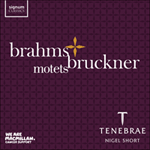 Brahms & Bruckner: Motets Brahms & Bruckner: MotetsAward-winning choir Tenebrae performs a sumptuous selection of motets by Johannes Brahms and Anton Bruckner. A portion of the proceeds from sales of this recording will be donated to Macmillan Cancer Support.» More |
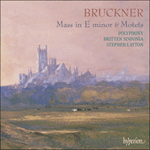 Bruckner: Mass & Motets Bruckner: Mass & Motets‘Peace and goodwill would be the order of the day if Father Christmas could hand out to all and sundry copies of Polyphony's recording of the Bruckner ...  BBC Music Magazine» More BBC Music Magazine» More |
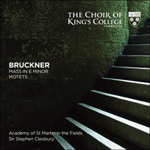 Bruckner: Mass in E minor & motets Bruckner: Mass in E minor & motetsBruckner’s E minor Mass and a selection of his profoundly beautiful motets were selected by Sir Stephen Cleobury as his last album at King’s, recorded only a few months before his death. Perhaps the deepest and most spiritual of Bruckner’s Masses, ...» More |
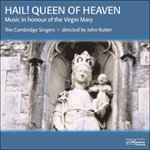 Hail! Queen of Heaven Hail! Queen of HeavenThis recording gathers together twenty-one examples of the extraordinary wealth of choral music inspired by the Virgin Mary, from Gregorian chant to the 20th-century sounds of Gustav Holst, Herbert Howells, Pierre Villette, Igor Stravinsky, Giles ...» More |
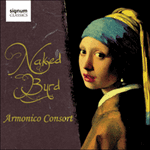 Naked Byrd, Vol. 1 Naked Byrd, Vol. 1Crossing several centuries, from the sixteenth to the present day this album displays how every generation has been inspired to use both sacred and secular music as a powerful medium to express their personal emotions.» More |

